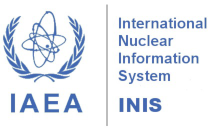Synchrotron Microtomography to Explore the Anatomy of Insects
DOI:
https://doi.org/10.15392/2319-0612.2024.2519Keywords:
computed microtomography, phase contrast, synchrotronAbstract
Recent advancements in high intensity synchrotron sources have revolutionized the field of non-destructive imaging, particularly in biological sciences. Synchrotron radiation micro-computed tomography (SR-microCT) has emerged as a powerful tool for visualizing complex 3D structures, from dense materials to delicate biological specimens. This technique enables unprecedented spatial resolution, facilitating detailed analysis of sub-tissue structures within organisms without invasive procedures. Additionally, X-ray phase-contrast imaging (PCI) has enhanced the visibility of soft tissues by exploiting phase shifts, complementing traditional absorption-based methods. This paper highlights the capabilities of SR-PCI in biological research, demonstrating its application on millimeter-scale samples of Aedes aegypti mosquitos and Drosophila melanogaster fruit flies at prominent synchrotron facilities.
Downloads
References
[1] ABRAMI, A. et al. Medical applications of synchrotron radiation at the SYRMEP beamline at ELETTRA. Nuclear Instruments and Methods in Physics Research Section A, v. 548, p. 221–227, 2005. DOI: 10.1016/j.nima.2005.05.029. DOI: https://doi.org/10.1016/j.nima.2005.03.093
[2] ALBERS, J. et al. Elastic transformation of histological slices allows precise co-registration with microCT data sets for a refined virtual histology approach. Scientific Reports, v. 11, p. 10846, 2021. DOI: 10.1038/s41598-021-90245-5. DOI: https://doi.org/10.1038/s41598-021-89841-w
[3] ARCHILHA, N. et al. MOGNO, the nano and microtomography beamline at Sirius, the Brazilian synchrotron light source. Journal of Physics: Conference Series, v. 2380, n. 1, p. 012123, 2022. DOI: 10.1088/1742-6596/2380/1/012123. DOI: https://doi.org/10.1088/1742-6596/2380/1/012123
[4] BRADY, O. J.; HAY, S. I. The global expansion of dengue: how Aedes aegypti mosquitoes enabled the first pandemic arbovirus. Annual Review of Entomology, v. 65, p. 191–208, 2020. DOI: 10.1146/annurev-ento-011019-024918. DOI: https://doi.org/10.1146/annurev-ento-011019-024918
[5] GIGLIO, A. et al. Exploring compound eyes in adults of four coleopteran species using synchrotron X-ray phase-contrast microtomography (SR-PhC Micro-CT). Life, v. 12, n. 5, p. 741, 2022. DOI: 10.3390/life12050741. DOI: https://doi.org/10.3390/life12050741
[6] KILLINY, N.; BRODERSEN, C. R. Using X-ray micro-computed tomography to three-dimensionally visualize the foregut of the glassy-winged Sharpshooter (Homalodisca vitripennis). Insects, v. 13, n. 8, p. 710, 2022. DOI: 10.3390/insects13080710. DOI: https://doi.org/10.3390/insects13080710
[7] LETA, S. et al. Global risk mapping for major diseases transmitted by Aedes aegypti and Aedes albopictus. International Journal of Infectious Diseases, v. 67, p. 25–35, 2018. DOI: 10.1016/j.ijid.2017.11.026. DOI: https://doi.org/10.1016/j.ijid.2017.11.026
[8] LIU, Y. et al. Recent advances in synchrotron-based hard X-ray phase contrast imaging. Journal of Physics D: Applied Physics, v. 46, n. 49, p. 494001, 2013. DOI: 10.1088/0022-3727/46/49/494001. DOI: https://doi.org/10.1088/0022-3727/46/49/494001
[9] MORIMOTO, J. et al. Assessing anatomical changes in male reproductive organs in response to larval crowding using micro-computed tomography imaging. Neotropical Entomology, v. 51, n. 4, p. 526–535, 2022. DOI: 10.1007/s13744-022-00989-6. DOI: https://doi.org/10.1007/s13744-022-00976-5
[10] MUNDIM-POMBO, A. P. M. et al. Aedes aegypti: egg morphology and embryonic development. Parasites & Vectors, v. 14, p. 1–12, 2021. DOI: 10.1186/s13071-021-04642-3. DOI: https://doi.org/10.1186/s13071-021-05024-6
[11] PERREAU, M.; HAELEWATERS, D.; TAFFOREAU, P. A parasitic coevolution since the Miocene revealed by phase-contrast synchrotron X-ray microtomography and the study of natural history collections. Scientific Reports, v. 11, n. 1, p. 2672, 2021. DOI: 10.1038/s41598-021-82397-0. DOI: https://doi.org/10.1038/s41598-020-79481-x
[12] SENA, G. et al. Synchrotron X-ray biosample imaging: opportunities and challenges. Biophysical Reviews, v. 14, n. 3, p. 625–633, 2022. DOI: 10.1007/s12551-022-00945-3. DOI: https://doi.org/10.1007/s12551-022-00964-4
[13] TOLWINSKI, N. S. Introduction: Drosophila – A model system for developmental biology. Journal of Developmental Biology, v. 5, n. 3, p. 9–10, 2017. DOI: 10.3390/jdb5030009. DOI: https://doi.org/10.3390/jdb5030009
[14] VOMMARO, M. L. et al. Anatomical study of the red flour beetle using synchrotron radiation X‐ray phase‐contrast micro‐tomography. Journal of Anatomy, v. 242, n. 3, p. 510–524, 2023. DOI: 10.1111/joa.13829. DOI: https://doi.org/10.1111/joa.13796
[15] WILKINS, S. W. et al. On the evolution and relative merits of hard X-ray phase-contrast imaging methods. Philosophical Transactions of the Royal Society A: Mathematical, Physical and Engineering Sciences, v. 372, p. 20130021, 2014. DOI: 10.1098/rsta.2013.0021. DOI: https://doi.org/10.1098/rsta.2013.0021
[16] YAMANY, A. S.; ADHAM, F. K.; ABDEL-GABER, R. Morphological description of the pupa of Aedes aegypti (Diptera: Culicidae) using a scanning electron microscope. Arquivo Brasileiro de Medicina Veterinária e Zootecnia, v. 76, n. 1, p. 43–54, 2024. DOI: 10.1590/1678-4162-14011. DOI: https://doi.org/10.1590/1678-4162-13120
Downloads
Published
Issue
Section
Categories
License
Copyright (c) 2024 Gabriela Sena Souza, Thaina Alvarenga, Tayane Tanure, Samara Oliveira, Katrine Paiva, Gustavo Colaço, Arissa Pickler, Gabriel Fidalgo, Liebert Nogueira, Marcos Colaço, Ademir Xavier da Silva, Cícero B. Mello, Ruan Ingliton, Marcelo Gonzalez, Patricia Azambuja, Regina Barroso

This work is licensed under a Creative Commons Attribution 4.0 International License.
Licensing: The BJRS articles are licensed under a Creative Commons Attribution 4.0 International License, which permits use, sharing, adaptation, distribution and reproduction in any medium or format, as long as you give appropriate credit to the original author(s) and the source, provide a link to the Creative Commons license, and indicate if changes were made. The images or other third party material in this article are included in the article’s Creative Commons license, unless indicated otherwise in a credit line to the material. If material is not included in the article’s Creative Commons license and your intended use is not permitted by statutory regulation or exceeds the permitted use, you will need to obtain permission directly from the copyright holder. To view a copy of this license, visit http://creativecommons.org/licenses/by/4.0/






















